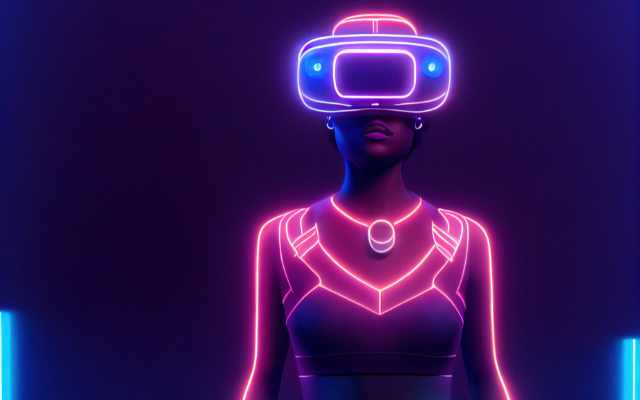The Best Graphics Cards for VR in 2023

Virtual reality (VR) technology has come a long way in recent years, and it is now more accessible than ever before. However, to experience the full potential of VR, you need a powerful graphics card that can handle the demanding requirements of VR applications. In this article, we will discuss the best graphics cards for VR in 2023, based on their performance, features, and price.
The Best Graphics Cards for VR in 2023
Nvidia GeForce RTX 3090:
The Nvidia GeForce RTX 3090 is currently the most powerful consumer graphics card on the market, making it an excellent choice for VR applications. With 10496 CUDA cores and 24GB of GDDR6X memory, the RTX 3090 can handle even the most demanding VR experiences with ease. Additionally, it supports real-time ray tracing and DLSS technology, which improves the visual quality and performance of VR applications.
Nvidia GeForce RTX 3080:
The Nvidia GeForce RTX 3080 is another high-end graphics card that is well-suited for VR applications. With 8704 CUDA cores and 10GB of GDDR6X memory, the RTX 3080 delivers excellent performance and can handle most VR experiences without any issues. It also supports ray tracing and DLSS technology, which enhances the visual quality of VR applications.
AMD Radeon RX 6900 XT:
The AMD Radeon RX 6900 XT is a powerful graphics card that is well-suited for VR applications. With 5120 stream processors and 16GB of GDDR6 memory, the RX 6900 XT delivers excellent performance and can handle most VR experiences without any issues. Additionally, it supports ray tracing and AMD’s FidelityFX technology, which improves the visual quality of VR applications.
Nvidia GeForce RTX 3070:
The Nvidia GeForce RTX 3070 is a mid-range graphics card that is still capable of handling most VR applications. With 5888 CUDA cores and 8GB of GDDR6 memory, the RTX 3070 delivers excellent performance and can handle most VR experiences at lower settings. It also supports ray tracing and DLSS technology, which enhances the visual quality of VR applications.
- How to Fix Common Graphics Card Issues: A Guide for Gamers
- Black Desert Online free on Steam until March 9
- How to Fix Desktop Window Manager High GPU Usage in Windows 10/11
Frequently Asked Questions (FAQs):
Q: Can any graphics card handle VR applications?
A: No, not all graphics cards are capable of handling the demanding requirements of VR applications. To fully experience VR, you need a powerful graphics card that can deliver smooth and lag-free performance.
Q: Is it better to get an Nvidia or AMD graphics card for VR?
A: Both Nvidia and AMD graphics cards are capable of handling VR applications. However, Nvidia graphics cards currently offer better support for ray tracing and DLSS technology, which can improve the visual quality and performance of VR applications.
Q: Do I need to buy a new graphics card if I already have one?
A: It depends on the performance of your current graphics card. If it is capable of handling VR applications without any issues, then you may not need to upgrade. However, if you are experiencing lag or other performance issues, then upgrading to a more powerful graphics card may be necessary.
Q: Can I use a VR headset with a laptop?
A: Yes, many laptops are now capable of running VR applications. However, you will need to ensure that your laptop meets the minimum system requirements for the VR headset and that it has a compatible graphics card.
Q: What VR headset should I use with these graphics cards?
A: The choice of VR headset depends on personal preference and budget. Some popular options include the Oculus Quest 2, Valve Index, and HTC Vive Pro.
Conclusion
The best graphics card for VR depends on a variety of factors such as budget, VR headset requirements, and gaming preferences. The latest and most powerful graphics cards available in the market are the Nvidia GeForce RTX 3090 and the AMD Radeon RX 6900 XT. However, these cards come at a premium price point, and lower-end options such as the Nvidia GeForce GTX 1660 and AMD Radeon RX 580 can also provide a great VR experience for a more affordable price.
It’s also essential to ensure that the graphics card is compatible with the VR headset and meets the minimum system requirements. By considering all these factors, gamers and VR enthusiasts can make an informed decision when purchasing a graphics card for their VR setup.
Lastly, it’s important to note that the VR industry is rapidly evolving, and advancements in technology will continue to improve the VR experience. Therefore, it’s crucial to keep an eye out for future developments and advancements in graphics card technology to stay ahead of the game.







